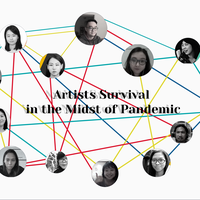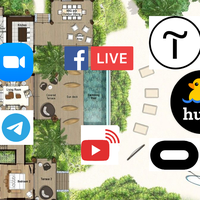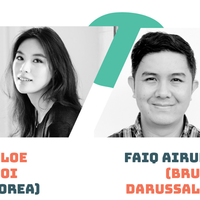Sustainable and Inclusive for All: Rethinking the Concept of "Cultural Mobility"
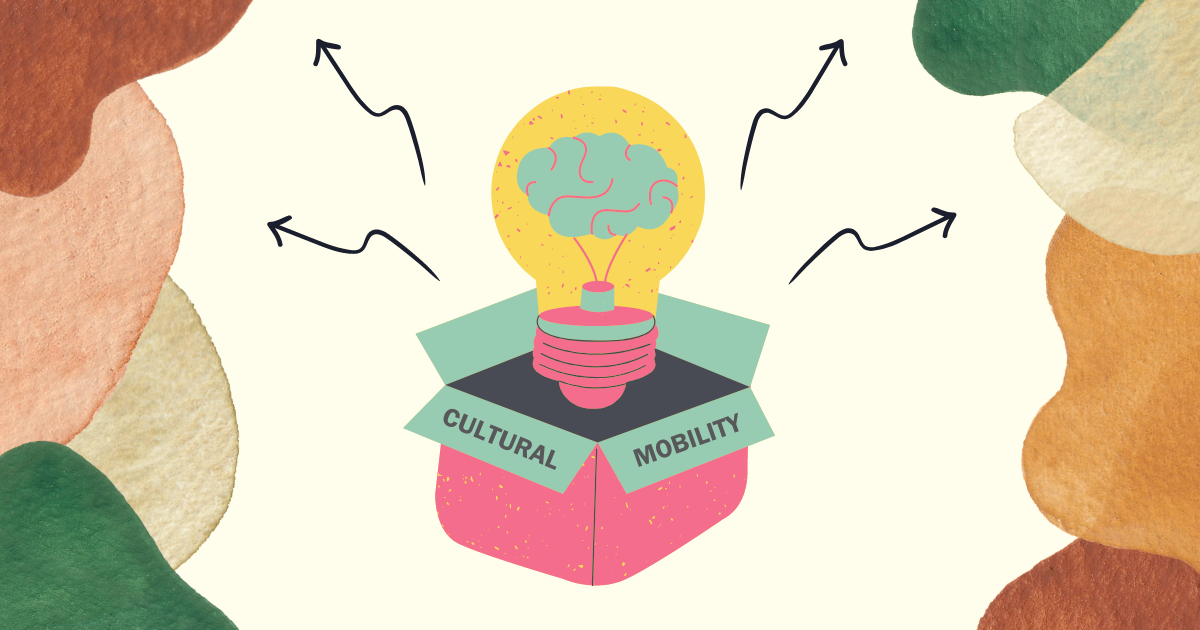
As part of culture360 recent Call for articles, Minji Jun presents some some case studies of online residencies to rethink the concept of "cultural mobility" from the perspectives of sustainability, equality, equity, and inclusion for all.
The original concept of cultural mobility is physical. In most cases, it involves the transient or permanent relocation of artistic and cultural professionals across international borders. Since the advent of globalisation, artists have taken to living nomadic lives, moving to other cities, and crossing continents. They often participate in international residencies around the world and continue to work and exhibit in a wide range of cultural contexts. In general, promoting cultural mobility is essential for finding new sources of inspiration for their work. And in a broader sense, it keeps transnational cultural connections alive.
However, there is a constant concern about the environmental impact of air travel and other modes of transportation: the carbon footprint. Then, can mobility be achieved by other means that do not entail cross-border activities? Do strong commitments to protect the environment and foster cultural diversity necessarily contradict one another? In addition, even within the category of artists, there are always those who are marginalised.
As studies that consider the necessity of various forms of mobility are generally lacking, there is room for discussion on this particular point. For instance, cultural mobility has overlooked the impossibility of accepting disabled or refugee artists. For those who have different mobility patterns, the current method of movement falls short of the original intent and may even be perceived as violent. With this in mind, what are some effective ways for the next generation of artists to "move" and "mobilise" themselves to obtain equal opportunities?
Virtual and Online Residencies in a Post-Pandemic Era
To take a more nuanced approach, we might imagine a metaverse-like virtual world where no one has to physically move to gather, or a hybrid space that combines face-to-face and online collaboration. What about utilising a variety of networking platforms (e.g., Miro, Gathertown, Zepetto) and related strategies to be mobile without actually travelling? Could some degree of equality, inclusiveness, and even diversity be guaranteed?
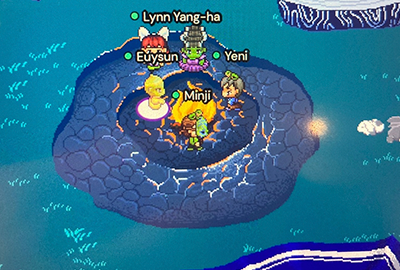 |
 |
1. A digital space on Gathertown © Photo by Minji Chun
2. Miro online collaboration tool © Photo from Virtual360 Konnect residency
Online art activity emerged at first as an alternative and experimental form in response to the global pandemic, as numerous institutions, including On the Move and Res Artis, have discussed. Yet, even after the most recent threat has passed, it may be the most legitimate and practical way for everyone who lives in a hyper-connected society to take part.
Notable shifts have already taken place. A recent example of the virtual residency, "P2P Residency - Distributed Web of Care" by C/O Berlin, invited artists to develop a "collaborative structure of solidarity where participants become agents in a network of trust and care" through peer-to-peer organising and research. Last July, Artist Residency Center Athens hosted their sixth virtual residency with two artists who are respectively based in the US and West Europe & West Africa, using Instagram as their medium to build a connection between different geographic locations. In the "Disability. Dance. Artistry. Residency Program", participating artists with disabilities have the option of participating in either an in-person or an online residency; regardless of which option they choose, they receive the same stipend and mentorship.
 |
 |
3. Website of the P2P Residency - Distributed Web of Care © Photo from C/O Digital
4. Pictures from the Virtual Residency © Photo from Artist Residency Centre Athens Instagram
With the global pandemic and its effects on cultural mobility and exchanges in mind, the Asia-Europe Foundation has also been working on five online residencies since the year 2020. In collaboration with Casa Asia, ASEF recently hosted an online residency with a special theme, "Arts and Climate Change". As a former participant of the "Virtual360 Konnect" in 2020, I was also able to recalibrate the ways of collaborating with my colleagues across space, culture, and time zones while curating the pilot online programme "still/yet residency". Overall, the case studies that were presented earlier illustrate how the post-pandemic world is gradually adjusting in order to continue to encourage artistic collaborations that transcend geographic boundaries.
New Forms of Cultural Mobility: Embracing Sustainability and Inclusivity
Most international, world-renowned residencies still maintain the same systems, but for them as well, it would be necessary to incorporate various levels of participation to be a space for all. By providing options to be online or face-to-face depending on the participants’ carbon footprints or offering alternative texts for visually impaired artists and equal participation opportunities for physically handicapped practitioners, they will be able to embrace sustainability and inclusivity.
In the end, it will be necessary for institutions to devise a concept of mobility that will work effectively at any point in the near future while transcending physical limitations without any constraint on accessibility and inclusiveness. It is true that the situation with the pandemic that has recently faced our society is seen as a significant obstacle and challenge. On the other hand, in a sense, it could also serve as a jumping-off point for change. If art is to have any chance of changing our society without becoming detached from the world in which it exists, then we need to take into consideration the two issues that were raised earlier. Perhaps, cultural mobility may take on a new, expanded meaning if we take into account both the global environment in its entirety and the marginalised communities that are close to us.
Links for Further Reading
-
https://on-the-move.org/
-
https://culture360.asef.org/virtual-residencies/
-
https://www.casaasia.es/
-
https://miro.com/app/
-
https://www.gather.town/
-
https://www.zepetto.com/
About the Author
Minji Chun is an art critic, curator, and translator based in Seoul and Oxford. Interested in the ways of interpreting unmentioned histories and spaces, she conducts research on socially engaged art in contemporary Korea as a DPhil candidate in History of Art at the University of Oxford. Her research and curatorial projects have been supported by the Ministries of France, Japan, and Korea, Asia-Europe Foundation, Korea Foundation, Arts Council Korea, and Seoul Foundation for Arts and Culture among others. Her recent art criticism in English and Korean includes publications for ArtAsiaPacific Web, Art&Market, and Center for Social Value Enhancement Studies.


